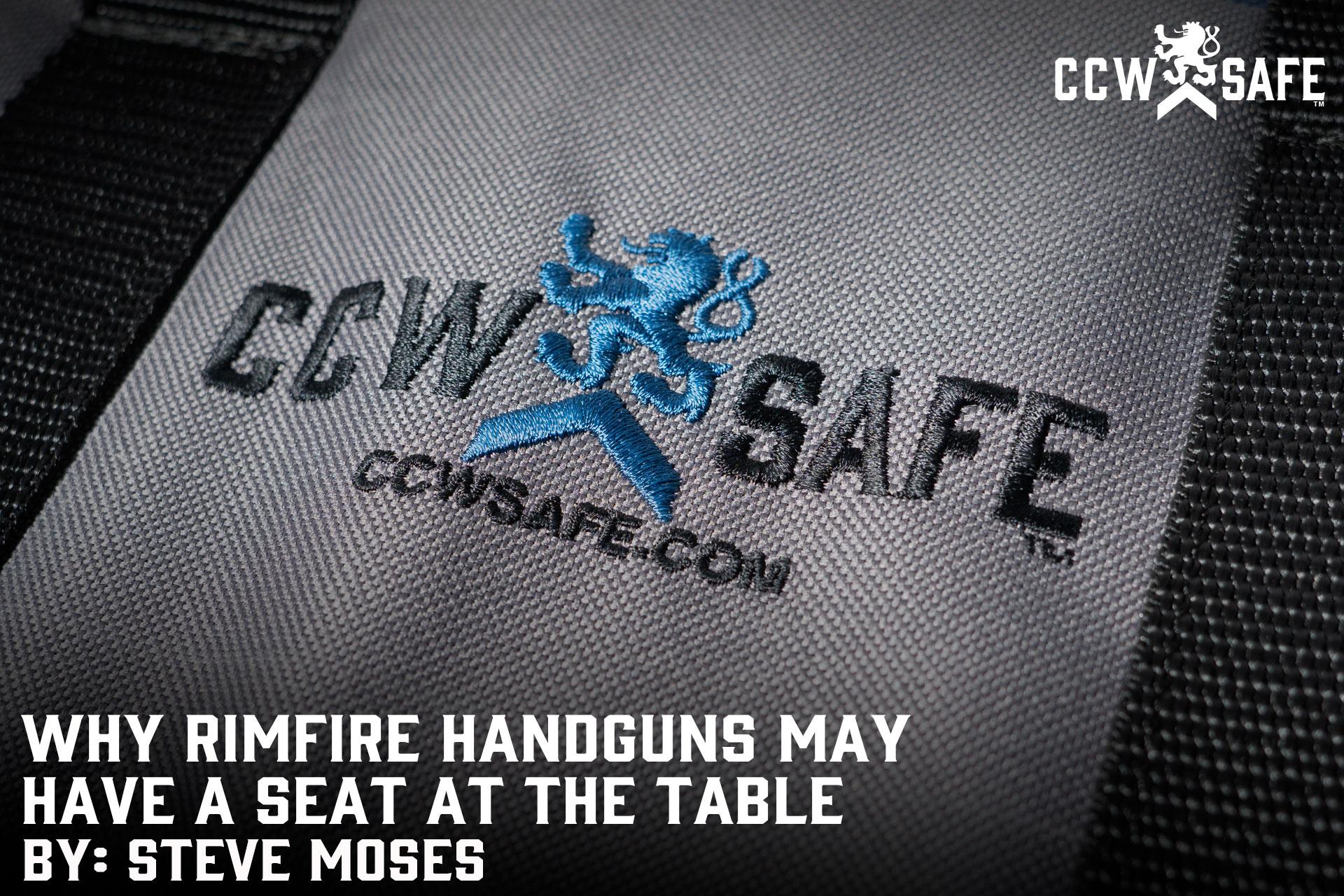
Posted on February 21, 2022
WHY RIMFIRE HANDGUNS MAY HAVE A SEAT AT THE TABLE
I personally know several highly respected defensive firearm trainers that would agree with me when I say that, as long as we did our part, we had the tools to effectively defend ourselves if we were armed with a quality pistol or double-action revolver chambered in .22 Long Rifle cartridge using high-quality ammunition in the event that we were targeted in one of the following criminal actions:
- Attempted mugging
- Attempted armed robbery
- Attempted carjacking
- Unprovoked assault by one or more persons with intent and ability to seriously injure or kill
- Attempted sexual assault
- Attempted kidnapping
- Home intrusion/invasion if motivation is robbery, kidnapping, or sexual assault
My rationale for this is that the majority of those attacks can be stopped because the attacker or attackers want to avoid being shot (or shot multiple times) more than they want to accomplish their original objective. The unexpected appearance of a firearm is often enough to send the same attacker fleeing. This is even more likely if the violent criminal attacker is hit in the upper centerline of the torso, throat, or face.
Granted, there is a small percentage of violent people in this world who are literally willing to fight to their last breath that will not stop attacking until their body is literally shut down. A firearm chambered in .22 Long Rifle shooting a bullet that weighs 35 to 45 grains will never be as effective as a medium-caliber 115 to 230-grain bullet. Larger bullets simply poke bigger holes and penetrate further than smaller bullets. That is why I almost always carry a pistol chambered in 9mm or a small revolver chambered in .38 Special. The other side to this equation is that a more powerful firearm is not always successful, and many persons (both good and bad) have in some case been shot over a dozen times with handguns chambered in larger calibers and survived. It goes without saying that if given a choice most concealed carriers prefer carrying a more powerful defensive handgun if they possess acceptable hand and wrist strength and can shoot it well. That is one of the reasons that for the most part I only carry a .22 pistol when fishing or if going on a hike where weight matters and an extra box of fifty rounds of ammunition take up little space.
What might make a quality handgun chambered in .22 Long Rifle a concealed carrier’s preferred choice as a defensive tool? I have been a defensive firearms instructor for nearly thirty years and worked with hundreds of students whose ages ranged from eighteen to eighty-four. I have met an untold number of people with a variety of physical infirmities that were concerned that the calvary would never arrive in time if they were caught up in a life-threatening situation. A handgun chambered in .22 Long Rifle caliber may be all that some people with compromised hands and wrists are able to handle.
The impetus for this article was a recent invasive surgery in which I had three bones taken out of my wrist due to severe arthritic damage. Pain and swelling aside, my wrist and hand were bound in a stiff brace for six weeks with the end result being that I no longer had enough strength in that hand to operate my nail clippers, much less cycle the slide on my Glock 48 and 19. The opposite was true when I experimented with my lightweight Smith and Wesson M&P 22 Compact chambered in .22 Long Rifle caliber. It was no problem at all to rack the aluminum slide due to its blowback operation in which the slide is held in place by its own mass and recoil spring tension. I am assuming that the reason that the slide is easily cycled is because the .22 Long Rifle is a relatively low-pressure round that fires a relatively lightweight projectile. Persons with chronic hand and/or wrist issues who lacked the strength to cycle the slide of a larger centerfire handgun or handle the greater recoil but wanted to carry a defensive handgun are completely left without options.
Not all handguns chambered in .22 Long Rifle are suitable for concealed carry. I prefer compact pistols that are similar in appearance and operation to handguns chambered in larger calibers that are commonly carried for self-defense. Examples would include the Glock 44 and Smith and Wesson M&P 22 Compact. I personally would not choose for concealed carry handguns that are commonly used for recreational and target shooting such as the Ruger 22/45, Browning Buckmark, and similar models shooting due to their weight and small safeties. I am aware that Ruger and some other gunmakers offer compact semi-auto pistols chambered in .22 Long Rifle, but I am refraining from commenting until I have first-hand experience with them. I did considerable research before purchasing my own Smith and Wesson M&P 22 Compact and so far have found it to be absolutely reliable with quality ammunition. There are also small-frame double-action revolvers chambered in .22 Long Rifle that are easy to load with a simple manual of arms, but the heavy trigger pulls may be more than some persons with minimal grip strength can handle. I would be remiss if I failed to mention the Smith and Wesson EZ Shield models in 9mm and .380 calibers for those who have difficulty racking the slides on the more conventional recoil-operated pistols in the same caliber but can handle the increased recoil.
I can say from past experience that articles like this tend to get pushback from some readers who are firearm enthusiasts. We should never forget that there are millions of persons in the United States who simply do not want to be crime victims and view a pistol as just another tool the same way some of us might look at a screwdriver or a fire extinguisher. A percentage of them (which may include all of us some day) are elderly or infirmed in some manner, and perhaps one of the handguns that I described above is all they can handle. Admittedly, the stakes are high in any one of the criminal actions that I described above. And so are the odds that the offender will break contact if the defender timely and competently employs a .22 Long Rifle pistol or revolver. Life is often about compromise.
 |
Steve MosesSteve Moses has been a defensive firearms trainer for over 26 years and is a licensed Texas Personal Protection Officer with 7 years of experience performing as shift lead on a church security detail for a D/FW area metro-church. Steve is a co-owner and Director of Training for Palisade Training Group, LLC based in Dallas, Texas. Moses is a retired deputy constable and spent over 10 years on a multi-precinct Special Response Team. He owns multiple instructor certifications, including Rangemaster Advanced Handgun Instructor and Defensive Shotgun Instructor, Red Zone Knife Defense Instructor and Adaptive Striking Foundations Instructor, Modern Samurai Project Red Dot Sight Instructor, and State of Texas Personal Protection Officer Instructor. Steve holds a BJJ Brown Belt in Relson Gracie Jiu Jitsu. He is a content contributor for CCW Safe and writes weekly articles on various subjects of interest to concealed carriers. Moses shoots competitively and holds an IDPA Expert rating. Steve is an annual presenter at the Rangemaster Tactical Conference. |